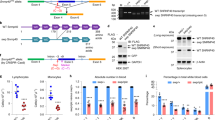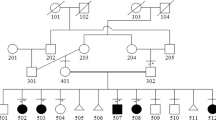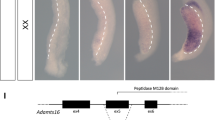Abstract
THE ‘luxoid’ mutants of the house-mouse form a small and well-defined group with striking limb-defects. In luxate1 (lx) and luxoid2 (lu) homozygotes hind-legs are often twisted, due to reduction or loss of the tibia and distortion of the fibula with associated muscular abnormalities. The femur may also be shortened and fragmented and even the pubic element of the pelvic girdle may be affected in luxates. The hind-feet may show pre-axial poly- or oligo-dactylism, the fore-feet may also be polydactylous in lu lu mice. Heterozygotes may appear normal or may have pre-axial triphalangy or polydactyly of the hind-feet. There are various other skeletal effects (on the number of presacral vertebræ, etc.) while the urogenital system is also involved in luxate homozygotes, with frequent hydronephrosis and hydroureter.
This is a preview of subscription content, access via your institution
Access options
Subscribe to this journal
Receive 51 print issues and online access
$199.00 per year
only $3.90 per issue
Buy this article
- Purchase on Springer Link
- Instant access to full article PDF
Prices may be subject to local taxes which are calculated during checkout
Similar content being viewed by others
References
Carter, T. C., J. Genet., 50, 277 (1951).
Green, M. C., J. Hered., 46, 91 (1955).
Green, M. C., and Dickie, M. M., J. Hered., 50, 3 (1959).
Carter, T. C. (unpublished).
Author information
Authors and Affiliations
Rights and permissions
About this article
Cite this article
SEARLE, A. Hereditary Absence of Spleen in the Mouse. Nature 184, 1419–1420 (1959). https://doi.org/10.1038/1841419b0
Issue Date:
DOI: https://doi.org/10.1038/1841419b0
This article is cited by
-
Immunoglobulin Synthesis in Hereditarily Spleenless Mice
Nature (1969)
-
Blood proteins and immune response in mice with hereditary absence of spleen
Die Naturwissenschaften (1962)
Comments
By submitting a comment you agree to abide by our Terms and Community Guidelines. If you find something abusive or that does not comply with our terms or guidelines please flag it as inappropriate.



